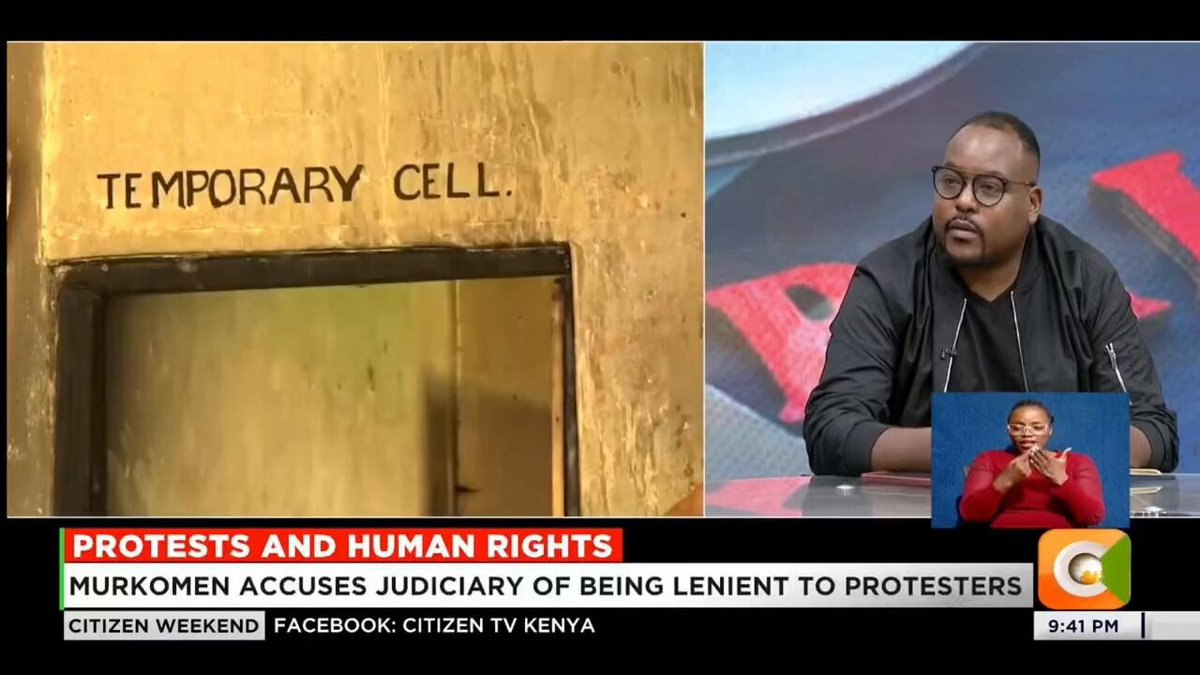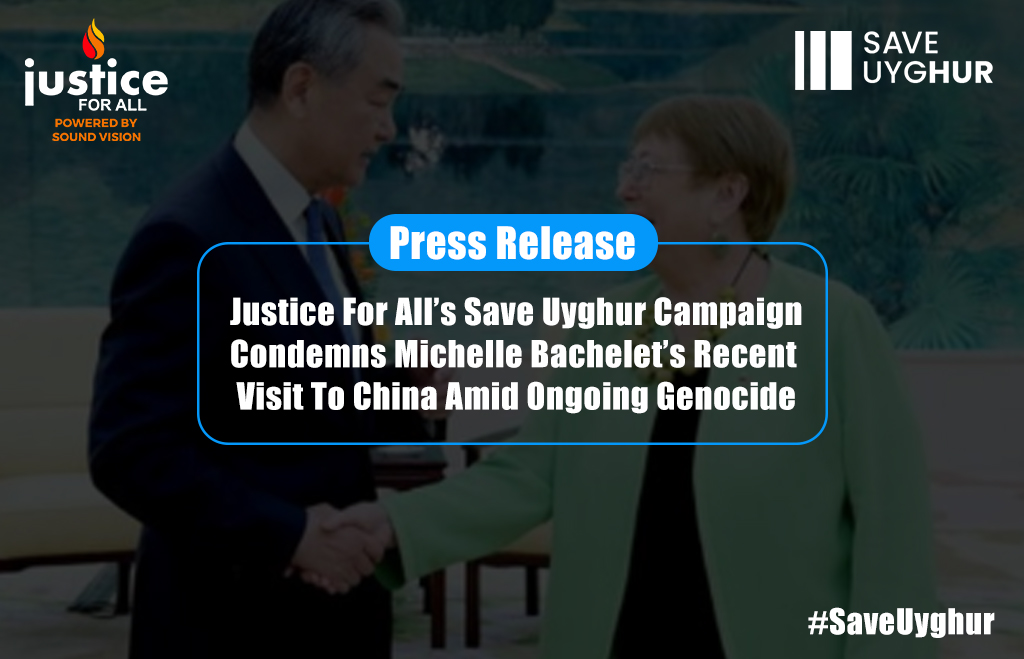Kenya : Escalating judicial harassment of Boniface Mwangi – fidh.org

Report on Human Rights Violations and Implications for Sustainable Development Goals in Kenya
Case Reference: KEN 002 / 0725 / OBS 045
Date: 31 July 2025
1.0 Introduction
This report details the arbitrary detention, judicial harassment, and subsequent release of human rights defender Mr. Boniface Mwangi in Kenya. The events described represent a significant challenge to Kenya’s commitment to the 2030 Agenda for Sustainable Development, particularly Sustainable Development Goal 16 (Peace, Justice and Strong Institutions), which seeks to promote peaceful and inclusive societies, provide access to justice for all, and build effective, accountable, and inclusive institutions at all levels.
2.0 Incident Analysis: The Case of Boniface Mwangi
The arbitrary arrest and prosecution of Mr. Boniface Mwangi, a prominent Pan-African author, photojournalist, and pro-democracy activist, directly contravene the principles of justice and fundamental freedoms enshrined in SDG 16.
2.1 Chronology of Events
- 19 July 2025: Mr. Mwangi was arbitrarily arrested at his residence by Directorate of Criminal Investigations (DCI) officers. His home and office, the “Mageuzi Hub,” were raided, with personal and work-related items seized.
- 19-21 July 2025: He was held in pre-trial detention at Pangani Police Station in Nairobi.
- 21 July 2025: Mr. Mwangi was presented before the Kahawa Magistrates’ Court. He was charged with “unlawful possession of ammunition” and subsequently released on bail of 1 million Kenyan shillings.
2.2 Judicial Harassment and Violation of Due Process (SDG 16.3)
The actions taken against Mr. Mwangi undermine SDG Target 16.3, which aims to promote the rule of law and ensure equal access to justice.
- Initial Charges: The DCI initially announced charges related to terrorism and money laundering for Mr. Mwangi’s role in organizing a peaceful mobilization on 25 June 2025. These charges were later dropped, suggesting they were intended to intimidate and suppress legitimate activism.
- Current Charges: The subsequent charge of “unlawful possession of ammunition” appears to be a form of judicial harassment aimed at punishing Mr. Mwangi for his human rights work.
- Use of Special Courts: His appearance before a court specializing in terrorism and transnational crimes for a firearms charge raises concerns about the proportionality and intent of the prosecution.
3.0 Broader Context: Erosion of SDG 16 in Kenya
The case of Mr. Mwangi is indicative of a wider pattern of repression that severely impedes progress on multiple SDG targets, most notably those under SDG 16.
3.1 Threats to Fundamental Freedoms and Civic Space (SDG 16.10)
The ongoing harassment of human rights defenders, journalists, and protest organizers constitutes a direct assault on SDG Target 16.10, which calls for the protection of fundamental freedoms. The actions against Mr. Mwangi and others restrict the rights to freedom of assembly, expression, and association, which are essential for a functioning democracy and the achievement of all SDGs.
- In May 2025, Mr. Mwangi and Ms. Agater Atuhaire were subjected to arbitrary arrest, enforced disappearance, and torture in Tanzania before being deported to Kenya. The failure to investigate these acts signals a lack of accountability.
- On 5 July 2025, Mr. Martin Mavenjina, a senior legal advisor at the Kenya Human Rights Commission (KHRC), was deported from Kenya to Uganda, further shrinking the space for human rights work.
3.2 Escalating Violence and Lack of Institutional Accountability (SDG 16.1 & 16.6)
Recent events demonstrate a failure to meet SDG Target 16.1 (reduce all forms of violence) and SDG Target 16.6 (develop effective, accountable and transparent institutions).
- Protest-Related Violence: During the 25 June 2025 commemoration, authorities documented 8 extrajudicial killings and 83 hospital referrals.
- Historical Data: During protests in 2024, 601 cases of police torture, 63 extrajudicial killings, and 63 enforced disappearances were recorded.
- Impunity: The failure of authorities to investigate these incidents and provide information on the disappeared, as noted by the UN Working Group on enforced disappearances, highlights a critical gap in institutional accountability.
4.0 Recommendations for Aligning with SDG Commitments
To uphold its commitments to the Sustainable Development Goals, particularly SDG 16, the authorities of Kenya are urged to take the following actions:
- Ensure Justice and End Judicial Harassment: Immediately drop all charges against Boniface Mwangi and cease all forms of harassment against him and other human rights defenders, thereby upholding the rule of law as mandated by SDG 16.3.
- Protect Fundamental Freedoms: Guarantee the rights to peaceful assembly, freedom of expression, and movement in line with national and international law, creating an enabling environment for civil society as per SDG 16.10.
- Guarantee Physical and Psychological Integrity: Uphold the state’s duty to protect all individuals, including human rights defenders, from violence, torture, and ill-treatment, in direct support of SDG 16.1.
- Strengthen Institutional Accountability: Conduct prompt, thorough, and impartial investigations into all documented cases of extrajudicial killings, torture, and enforced disappearances, ensuring perpetrators are brought to justice and strengthening institutional integrity as per SDG 16.6.
1. Which SDGs are addressed or connected to the issues highlighted in the article?
SDG 16: Peace, Justice and Strong Institutions
- The article extensively discusses issues directly related to SDG 16, such as arbitrary detention, judicial harassment, torture, extrajudicial killings, and restrictions on fundamental freedoms. The case of Boniface Mwangi and the broader context of repression against human rights defenders, journalists, and protestors in Kenya highlight failures in ensuring peace, upholding justice, and maintaining strong, accountable institutions. The article points to a systemic problem of violence, a lack of rule of law, and the persecution of those who exercise their fundamental rights.
2. What specific targets under those SDGs can be identified based on the article’s content?
Target 16.1: Significantly reduce all forms of violence and related death rates everywhere
- The article provides explicit evidence of violence and related deaths. It mentions “eight extrajudicial killings” during the June 2025 commemoration, “63 extrajudicial killings” recorded during the previous year’s protests, and “at least 31 individuals were killed during the July 2025 protests alone, bringing the total number of fatalities since June 2024 to over 100 deaths.” It also details acts of torture against Boniface Mwangi and others, citing “601 cases of police torture.”
Target 16.3: Promote the rule of law at the national and international levels and ensure equal access to justice for all
- The judicial process described for Boniface Mwangi, including his “arbitrary arrest,” being held in “pre-trial detention,” and facing “judicial harassment,” points to a failure in promoting the rule of law. The article notes that the initial “terrorism and money laundering related charges” were dropped under pressure, suggesting the charges were not based on solid legal grounds but were aimed at “punishing him for his legitimate human rights work.” This demonstrates a lack of equal and fair access to justice.
Target 16.10: Ensure public access to information and protect fundamental freedoms, in accordance with national legislation and international agreements
- The article focuses on the persecution of individuals for exercising their fundamental freedoms. Boniface Mwangi, an “author, award-winning photo journalist, and pro-democracy activist,” was targeted for his role in “organising the 25 June 2025 mobilisation.” The broader “wave of repression of dissenting voices in Kenya” against “human rights defenders, journalists, and protest organisers” and the specific mention of “Restriction to freedom of assembly” directly contravene this target. The article also highlights “abductions and enforced disappearances,” which are severe violations of fundamental freedoms.
3. Are there any indicators mentioned or implied in the article that can be used to measure progress towards the identified targets?
Indicator 16.1.1: Number of victims of intentional homicide per 100,000 population, by sex and age
- The article provides raw numbers that contribute to this indicator. It explicitly states there were “eight extrajudicial killings,” “63 extrajudicial killings… recorded during last year’s protests,” and “at least 31 individuals were killed during the July 2025 protests,” with a total of “over 100 deaths” since June 2024. These figures represent victims of intentional homicide by state actors.
Indicator 16.3.2: Unsentenced detainees as a proportion of overall prison population
- The article implies this indicator by mentioning that “Boniface Mwangi was held in pre-trial detention at the Pangani Police Station in Nairobi, from 19 to 21 July 2025.” This is a direct example of an unsentenced detainee. The prevalence of arbitrary arrests suggests that many others are likely held in a similar status.
Indicator 16.10.1: Number of verified cases of killing, kidnapping, enforced disappearance, arbitrary detention and torture of journalists, associated media personnel, trade unionists and human rights advocates in the previous 12 months
- The article provides specific data for this indicator. It details the “arbitrary detention” and “torture” of Boniface Mwangi (a journalist and human rights defender). It also cites “63 enforced disappearances” recorded during protests and mentions the enforced disappearance of Mwangi in Tanzania. The deportation of Martin Mavenjina, a “senior legal advisor at the Kenya Human Rights Commission,” is another case of harassment against a human rights advocate. The article explicitly states that “Human rights defenders, journalists, and protest organisers have been subjected to arbitrary arrests, torture, threats, abductions and enforced disappearances.”
4. Table of SDGs, Targets, and Indicators
| SDGs | Targets | Indicators |
|---|---|---|
| SDG 16: Peace, Justice and Strong Institutions | 16.1: Significantly reduce all forms of violence and related death rates everywhere. | 16.1.1: Number of victims of intentional homicide. (Mentioned in the article as “eight extrajudicial killings,” “63 extrajudicial killings,” “31 individuals were killed,” and “over 100 deaths” since June 2024). |
| 16.3: Promote the rule of law at the national and international levels and ensure equal access to justice for all. | 16.3.2: Unsentenced detainees as a proportion of overall prison population. (Implied through the case of Boniface Mwangi being “held in pre-trial detention”). |
|
| 16.10: Ensure public access to information and protect fundamental freedoms, in accordance with national legislation and international agreements. | 16.10.1: Number of verified cases of killing, kidnapping, enforced disappearance, arbitrary detention and torture of journalists… and human rights advocates. (Mentioned as “arbitrary detention,” “torture,” and “enforced disappearance” of Boniface Mwangi and others; “63 enforced disappearances” recorded; harassment of journalists and human rights defenders). |
Source: fidh.org

What is Your Reaction?
 Like
0
Like
0
 Dislike
0
Dislike
0
 Love
0
Love
0
 Funny
0
Funny
0
 Angry
0
Angry
0
 Sad
0
Sad
0
 Wow
0
Wow
0



























;Resize=805#)



















































